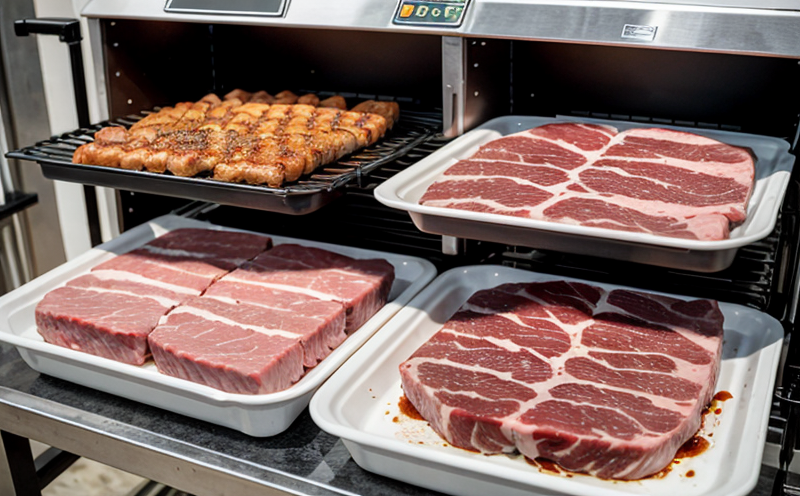ISO 10272 Campylobacter Detection in Poultry Meat
The presence of Campylobacter jejuni and other species within the genus is a significant concern in the food industry, particularly for poultry meat. This pathogen can cause severe gastrointestinal illness and has prompted stringent regulations aimed at minimizing its contamination in food products. The ISO 10272 standard provides a robust framework for detecting Campylobacter in poultry meat, ensuring that producers meet these regulatory requirements.
The testing process involves multiple steps, including sample collection, transport media preparation, and selective cultivation on specialized media. Once isolated, the bacteria are identified using biochemical tests or molecular techniques like PCR (polymerase chain reaction). This method ensures accurate detection even in low concentrations, which is critical for food safety.
The importance of this test extends beyond simply identifying contamination; it also helps establish a baseline for quality control and process improvement. By regularly testing batches of meat, processors can monitor trends over time, identify sources of contamination, and implement corrective actions promptly. This proactive approach not only enhances consumer trust but also reduces the risk of recalls and associated financial losses.
Compliance with ISO 10272 is essential for food manufacturers operating in regulated markets such as Europe or North America. Failure to adhere can result in fines, product bans, and damage to brand reputation. Regular testing ensures that companies remain compliant while also contributing positively to public health.
| Standard Reference | Description |
|---|---|
| ISO 10272-1:2006 | General requirements for the detection of Campylobacter spp. in foods |
| ISO 10272-2:2006 | Methods for the enumeration and identification of Campylobacter jejuni subsp. jejuni in foods |
The standard outlines not only the methods but also the criteria used to interpret results, ensuring consistency across laboratories. This is crucial given that different labs may have varying capabilities and resources.
Applied Standards
| Standard Reference | Description |
|---|---|
| ISO 10272-1:2006 | General requirements for the detection of Campylobacter spp. in foods |
| ISO 10272-2:2006 | Methods for the enumeration and identification of Campylobacter jejuni subsp. jejuni in foods |
Why Choose This Test
- Comprehensive compliance with international standards.
- Advanced detection methods for accurate results even in low concentrations.
- Supports regulatory requirements and helps maintain a good reputation.
- Aids in identifying sources of contamination early, facilitating timely corrective actions.
Quality and Reliability Assurance
- The use of standardized methods ensures consistent results across different laboratories.
- Regular calibration and validation of equipment maintain high levels of accuracy.





